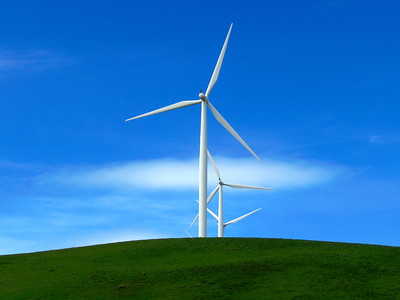Texas governor Greg Abbott has been making headlines lately. Everyone has an opinion about Abbott, and Texas, for that matter. But setting Texas politics aside, Abbott did something earlier this summer that makes a lot of sense. He signed over nearly $100M in federal COVID-19 relief funds to the state’s colleges and universities.
Abbott’s plan for the funds is to help both individual students and Texas institutions with cash infusions. Under the plan, the higher education institutions will use the funds to launch new academic programs. Building new degree programs in high-demand fields will not only help area employers and local industries, but also it will create a pipeline of students to boost enrollment at Texas colleges and universities.
Without a doubt, Texas is the biggest player in energy jobs in the US. The state is practically synonymous with the oil and gas industry. But that hasn’t stopped Texas from creating a clean energy industry. California has more than a half million clean energy jobs; that’s the most of any state in the US. Texas is second, with about half as many jobs in renewable/sustainable energy.
That says a lot about a place where oil and gas operations generated $14B in tax revenues in 2020. (And 2020 was a bad year for oil and gas.) Texas is going all in on clean energy because the state knows that its oil and gas revenues won’t last forever. In fact, the next decade is likely to see a major shift to clean energy.
Louisiana community college gets clean energy jobs grant
Earlier this month, the US Department of Labor awarded River Parishes Community College in Gonzalez, LA a $1.5M grant to develop clean energy education programs. The grant will fund clean energy jobs training in solar, wind, and hydrogen energies. Like Texas, Louisiana also relies heavily on taxes from the oil and gas industry. Last year, Louisiana collected nearly $5B in oil and gas revenues.
The move to clean energy is more urgent than ever. This is not simply a passing fad. It’s going to be the energy reality for the foreseeable future. States that have prepared a labor force to take on these clean energy jobs can transition to clean energy faster and more efficiently than states that don’t. Although we have a “national” electrical grid, most energy is locally produced. Michigan will need to produce clean energy in large volumes. Producing that energy will require skilled, trained workers.
Like all other higher education institutions in the US, Washtenaw Community College received a large infusion of federal funds. $37M. Some of that funding can be used to develop high impact academic programs – including clean energy workforce education and training. Students can expect to graduate into a high-demand job market with excellent salary and benefits. This is exactly the kind of opportunity that a community college was built for.
Our community college isn’t spending its federal funds to develop clean energy jobs programs. Instead, WCC is developing training programs that slot workers into $12-per-hour jobs. And WCC is using $4M of its relief dollars to prop up a quasi-private health club built with very public funds.
While community colleges in Texas and Louisiana embrace clean energy jobs, the best idea our community college administration has is to build a Starbucks in the parking lot. And make the students pay for it.
Photo Credit: Dru, via Flickr







































